
All categories
Featured selections
Trade Assurance
Buyer Central
Help Center
Get the app
Become a supplier

(5220 products available)



























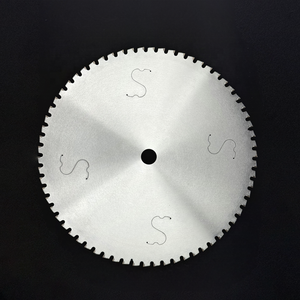




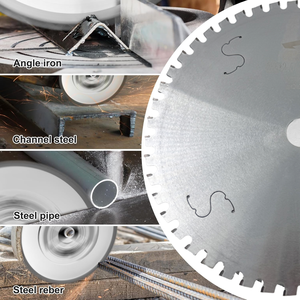


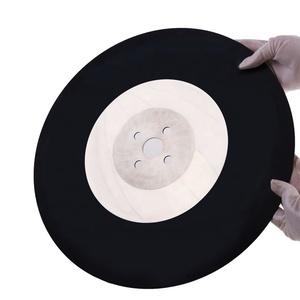


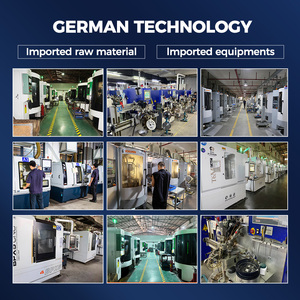



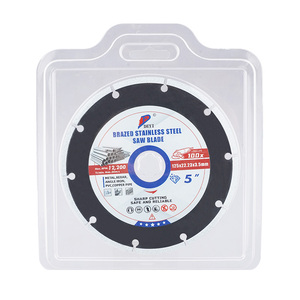
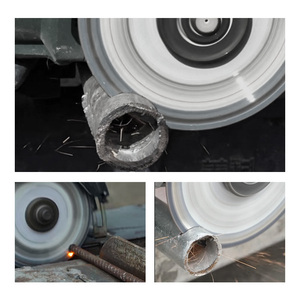








Saw blades for cutting iron are very specialized and come in a range of types to deal with the different tasks that need to be done. The difference between these blades lies in the materials used to make them and in the tooth designs used in the cutting operation, therefore making a big difference in the ultimate type of cut that is to be achieved and the durability of the blade.
Saw blades classified as S-abrasive are so termed because they contain a high concentration of carbide-containing abrasives, such as corundum or silicon carbide. These saw blades are highly durable and applicable for use in cutting operations with a very strong metal base. They are ideal for cutting soft iron and steel alloys, especially when the cut requires a degree of precision and must be done over a long period.
Reciprocating saw blades are different from conventional iron-cutting blades because most of these blades feature a metal substrate reinforced with teeth that have been especially designed for cutting through heavy metal sections. These blades have been engineered to withstand heavy application and will remain effective when used in demolition, scrap processing, or construction work.
These are ideal for straight cuts, using either a cutting machine or a hand-held operational machine. It features teeth embedded with fine-grained hard materials, such as carbide. It has proven to be effective for clean cuts and does not require too much effort. Many of these saw blades have noise and vibration dampers to enhance cutting stability.
Mitre saw blades help to make cuts to metal at an angle. These blades are fixed to saw machines for cutting metal and have teeth configurations suited for angle cuts on iron and metal. These are commonly used in the construction and manufacture of metal frames or structures that require precise angle cuts.
The durability of saw blades is essential when operating in industries where iron cutting requires constant operations. This is because, over time, the materials and technology used to produce saw blades have developed from basic engineering techniques to a more advanced technology based on the principles of modern materials combining into more resilient compositions.
High-carbon steel is a very common material used to make saw blades. It has high rigidity, and it can hold the edge of the cut well, of course. The steel used to make high-carbon steels is mixed with more carbon than other steel types. This combination allows the material to become very hard, yet when heat is applied to temper it, it becomes tough and easy to use. Hence, high-carbon steel saw blades will endure wear and serve a long time—especially on power tools in industrial workshops.
Blade construction in which two metals are welded together to form a tooth, known as bi-metallic construction, is the most durable way to construct teeth. In such constructions, the teeth are made of high-speed steel to increase hardness, while the blade immediately behind the teeth is made of flexible tough steel. Such an arrangement ensures that the teeth last a long time, and the blade can bend without breaking. Blades made from bi-metal construction are usually used in heavy-duty and industrial applications, where such an attribute is most desired.
Tungsten carbide tips are considered for applications where there is a severe abrasive wear or thermal wear consideration. Tungsten carbide possesses very strong covalent bonds, making it very resistant to wear and thermal degradation. Carbide tips are applied to blades used in cutting very hard iron or iron-based alloys. The solid carbide tips ensure that the teeth are sharp even after long-lasting use, thus ensuring longer blade life.
These blades are made of steel alloys with additional nickel and chrome for the alloying material. Blades degrade and rust less and are therefore more durable. In iron cutting applications that require consistent cuts and resistance to wear, such blades are ideal. The added nickel provides more toughness, while chrome prevents rusting; thus, these blades are ideal for use in industries.
When it comes to saw blades made for iron cutting, so-called supplies or saw /sand synchronization in blades or blade supplies/synchronization in blades or blade supply /Syndrome is generally concerned with the factors that have to do with the life expectancy of the blade. Such factors include usage, heat, or aberrational wear. Here are some common factors that contribute to this:
Blade tension is the key to controlling or reducing blade wear. Insufficient blade tension will cause more friction and work the blade; on the other hand, if the blade is too much, it will cause the teeth to become blunt and snap. A stable level of blade tension must be maintained during use. By having a proper tension set for the blade and having a precise mallet working on it, it is possible to realize the required stability.
Cutting speed simply refers to the speed at which one needs to cut through iron to avoid excessive wear on the saw blade. An ideal cutting speed should be cut, which will allow for efficient cutting without overheating the blade. High-speed cutting can lead to excessive friction and Heat, while slower cutting speeds might take longer but reduce wear on the blade. Hence, adjusting the cutting speed depending on the thickness of the iron and the type of saw blade being used is essential.
Metal cutting lubricants reduce friction, which causes the blade to wear out. Lubricants inaphone the cutting surface iron, thus causing cool to be transmitted to the blade and reducing the blade's friction to almost non-existent. Lubrication cuts a lot faster, and blades last longer without wear and tear. There are blade types that require lubrication, and the absence of lubrication makes the life of the blade very short.
Keeping the blade sharp during operation is important for its durability. Blades that require no sharpness in periods frequently undergo wear and tear. A lubricating or cooling agent also helps keep the blade's teeth from wearing out as much. Also, having a device that cuts down the turn-on time for sharpening the blade will help reduce the number of blades that will eventually have to be replaced during operation.
In industrial applications, where iron cutting would be very involved, the quality of the actual saw blades and all the relevant test measures employed to ascertain such a quality must be accounted for and recorded. One key measure of quality relates to the degree to which the blade wears, and that measure speaks of how long the blade will cut before it becomes ineffective. Below are the most essential quality aspects and test considerations for iron-cutting saw blades.
Tooth hardness is actual hardening pertaining to the actual teeth of the blade. Hardness indicates teeth not easily abraded when coming into contact with the material being cut. Because cutting speed characterizes the tooth hardness test, a blade will have its teeth subjected to cutting a hard metal block, and the reduction of the blade will be measured. This helps determine whether the material used to make the tooth has good wear resistance.
This is potential damage measured. Brittle teeth will break or chip, particularly if there are heavy or shock loads applied to them or if there are sudden temperature changes. The impact test is one common method of measuring tooth brittleness in iron cut blades: this involves measuring the ability of a notched sample to undergo fracturing after being exposed to pieces of swinging pendulum equipment. This is then important in determining blade suitability for applications associated with frequent stresses.
Blade tracking is referred to then as consistent movement across the material to be cut without any deviation. Deviations in the cut will lead to unbalance wear on some teeth more than others or even distort the blade's body. This test is performed on a test rig, where the tracked blade is observed for any signs of wobbling or veering off course. Effective blade tracking is crucial in minimizing wear with effective cut and ensuring quality.
Heat reduction capacity is also indicative of blade performance. Excessively generated heat can cause blade wear and deform hardening of teeth. The test involves measuring the temperature rise of the blade when cutting. The faster the metal cutting process, the better the saw blade material and design to enhance heat dissipation in order to reduce wear on the blade.
When choosing the kind of blade to help cut iron, several factors come into consideration. Below are the most important:
The choice of blade material affects wear resistance and its capacity to cut. High-carbon steel is often used for cutting thin materials, while bi-metal and carbide-tipped blades are more suitable for heavy industrial usage since they are more durable.
This refers to the size and type of the teeth of the blade. Teeth with more jumps are suitable for removing more material with each cut, and that is ideal when cutting thick iron. Highwoodsquaretooth blades are good for finishing since they cut more smoothly. It is best to consider the thickness of the material to be cut and go for a blade with the right size of teeth.
The thickness of the blade affects both cut stability and the life of the blade. Thicker blades offer more stability and are ideal for heavy iron cutting. Lighter ones are better suited for detail work or thinner materials. Also, the wider the cut, the larger the blade will have to be. Take note that there should be no excess space between the blade and the iron fence for the best results.
Ensuring that the blade is compatible with the type of saw is important. Various saws require blades of different diameters and drive slot configurations. The information on the manufacturer's guidelines should be used as the basis for the selection of the correct blade. Also, pay attention to whether the iron saw blade is meant for use with a compound miter saw or with a sliding miter saw because there is a big difference in construction between the two saws.
Friction is mitigated by certain features such as the presence of anti-vibration or dampening mechanisms in the structure of the blade. Such features help to reduce noise and increase cut precision, for instance, in the iron blade. There are also blades with teeth formations that help with chip removal, which also assist in lowering friction and improving the cutting capacity.
A1: Iron cutting saw blades are structurally designed to cut the metal. But some other softer metals can also be cut, like aluminum or copper. For these materials, one should use blades better suited for lighter cuts.
A2: Yes, wear can significantly be reduced by proper cutting speed adjustment, effective blade sharpening, lubrication, and using the right blade for the material.
A3: Blade warping is usually as a result of excessive Heat or improper tensioning. Frequent shock or bending changes can also lead to permanent distortion.
A4: Notification should be checked as soon as there is a change in performance. Typically, that would be after several hours of usages, but conditions such as material type affect this frequently.
A5: Tungsten carbide tip blades offer the best strength and durability for tough cutting jobs due to their exceptional resistance to wear and heat.